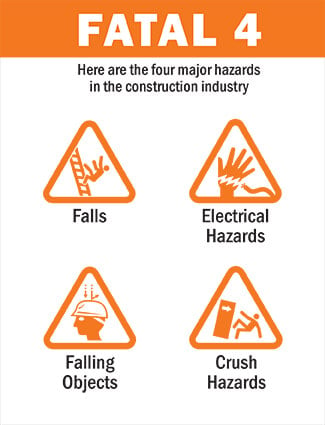Construction Leaders Investing in Future of Overall Growth
03
February,
2023
2 MINUTE READ

A good indicator of a city's growth and construction outlook is the number of construction cranes. Where these massive machines can be seen towering above and moving materials there likely are new housing projects budding and bustling below. So far, Q1 2021 is building a stronger workload that will carry promise into Q2-a hopeful response after a severe collapse in activity in 2020 due to the coronavirus pandemic, according to industry experts. With investment confidence and growth today in construction comes an increase in vigilance for the health and safety of workers, along with project efficiency, to stem increasing financial costs in construction projects.
Cautiously Optimistic
Rider Levett Bucknall, a leading independent organization in cost management and quantity surveying, project management, and advisory services, recently reported that the overall status of construction crane activity in North America is on an upward trend. Cities seeing an increase are Boston, Calgary, Denver, Honolulu, Los Angeles, Toronto, and Washington DC. Cities holding steady are Chicago, New York, Portland, and Seattle.
Construction price pressures and labor are increasing as the year goes on as well. That increase is likely to sustain through the next few years as government infrastructure plans unfold. Last year, the construction industry had 7.8 million workers but needs 430,000 more workers, according to the Bureau of Labor Statistics. ABC members made investments in construction workforce education of $1.3 billion, according to Associated Builders and Contractors.
"America's economic engine is fueled by a workforce equipped with durable and transferable skill sets, and ABC members are dedicated to investing in essential safety education and professional development for craft and management professionals," said Greg Sizemore, ABC's vice president of health, safety, environment, and workforce development. "Apprenticeship and career technical education provide the right tools to our nation's workforce to not only build the places where Americans live, work, heal, play, and learn, but also cultivate long-lasting and rewarding career opportunities."
For the top construction companies throughout the world, worker safety is a priority. When a thorough safety program is in place and established from the top down, it ensures a solid, committed workforce while also helping keep costs down.
In 2019, the cost of work-related injuries was $171 billion. "This figure includes wage and productivity losses as well as medical expenses, administrative costs, and employers' uninsured costs spent on the value of time lost by workers other than those with disabling injuries who are directly or indirectly involved in an injury," according to Uplift Legal Funding.

Steps for Safety
It might seem like a laborious task to really improve construction safety, but all it takes is a simple, holistic approach. Employers can get results through the following methods:
- Engineering controls
- Safe work practices
- Personal Protective Equipment (PPE) assessment and training
- Daily inspections and preventive maintenance
- Employee injury and illness programs
- Training and assistive technology
While establishing a firm foundation in safety, construction companies and contractors need to invest in the process consistently and thoroughly. Make a commitment to routine activities, such as job site and task inspections, worker and equipment training, following compliance, and following through on accountability. Address common construction site hazards and those unique to the project to keep workers safe through OSHA's recommendations for site communication compliance. Compliance success also requires attention to worker needs through effective and clear communication. Use tools to support safety, efficiency, and compliance goals through safety signs and labels.
Get a comprehensive list of written programs required by OSHA and an example pre-inspection checklist in this Construction Safety Managers guide.
RELATED RESOURCES

5 Tips for Construction Safety During COVID-19
Construction companies and workers are getting back to their sites with new safety precautions to help ...
Read
Technology in Construction: From the Ground Up
The increased aligning of construction technology and management are improving projects all around - ...
Read
Improve Falling Objects, Struck-Bys in Construction
Falling objects and struck-bys are some of the most common job hazards that lead to injury or death in ...
Read.png)


